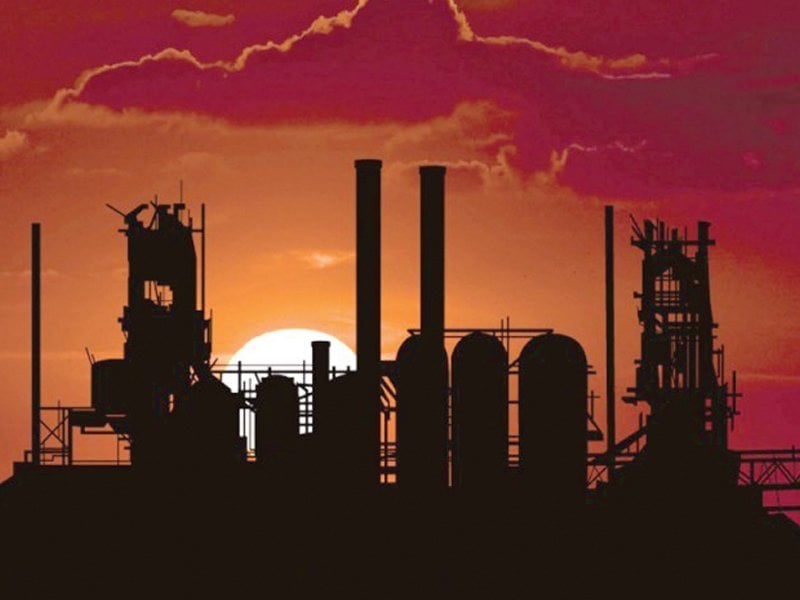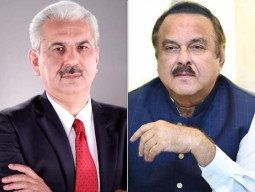
ISLAMABAD: After decades of galloping ahead, globalisation has now reached a fork in the road. One side is led by US President Donald Trump who is categorically against globalisation. He is trying to decelerate its pace through a threefold approach - imposing tariffs on bilateral fronts, withdrawing from big regional trade agreements and impeding work of international organisations.
He is being supported by his ally UK Prime Minister Boris Johnson, who helped lead the Brexit campaign and is now in a hurry to implement it. Some call this reversal of globalisation as 'slowbalisation'. On the other side is China whose President Xi Jinping is positioning himself as the leader of free trade. He has repeatedly reaffirmed that his country's doors will only open wider and wider.
Reversing Pakistan’s premature deindustrialisation
Despite active opposition from the United States, its Belt and Road Initiative aimed at linking Asia, Europe and Africa through Chinese investment is making good progress. Similarly, there is an influential group of developed as well as developing countries which acknowledge the benefits of globalisation and are pushing ahead with it. For example, 11 such countries, accounting for 40% of global trade, entered into the Comprehensive and Progressive Agreement for Trans-Pacific Partnership
(CPTPP), which became effective this year. These countries are Japan, Vietnam, Brunei, Malaysia, Singapore, Australia, New Zealand, Canada, Mexico, Peru and Chile. This ambitious trade agreement was concluded despite withdrawal of the United States. Then there are some countries that have continued to follow import substitution policies but are now feeling they are being left out.
For instance, Brazil has decided to turn the page. The new Brazilian government has announced unilateral liberalisation of trade by reducing import tariffs on almost all highly protected industries along with other tax cuts, privatisation and deregulation. Along with other Mercosur countries - Argentina, Paraguay and Uruguay, Brazil is now working on two important free trade agreements – with the United States and the European Union.
Even those African countries that had been least integrated with the global economy are moving towards globalisation. Next year they aim to make operational the world's largest free trade area by the number of countries.
South Asia's progress How has South Asia's progress been in this regard? Since 1991 India has been gradually integrating its economy with other countries. Already it has free trade agreements with all major economies in Asia including Japan, South Korea and Asean member states. India had a record trade deficit of $176 billion in 2018 but its news headlines do not focus on it unlike Pakistan. Despite this huge trade deficit, it is now in final stages of negotiating with
16 other countries to form the Regional Comprehensive Economic Partnership (RCEP), which will give it duty-free market access to the remaining major regional economies including China, Australia and New Zealand. Bangladesh, like Pakistan, is not part of any significant regional free trade agreement.
However, there are two important differences. First, being a least developed country, it has free market access to most of the developed countries. Second, it has integrated its economy with India with bilateral trade now exceeding $10 billion. Its policies are working well. Its exports have grown from about $2 billion in the early 1990s to over $40 billion in 2018.
This year its economy is expected to be among the world's fastest growing ones, with real gross domestic product (GDP) growth of 8.1%. Pakistan trailing Why does Pakistan lag behind? There may be many reasons but an obvious one is its trade policies. According to a recent World Bank report, Pakistan continues to be one of the seven most protectionist countries in the world.
In last year's budget, a major step towards reforms was taken when duties on about 1,600 industrial raw materials were reduced. This liberalisation was, however, more than offset through the levy of fresh regulatory duties on about 3,000 products, creating non-tariff barriers to the flow of many consumer goods through the new requirement of labeling in Urdu and banning all imports from India, including those of essential raw material. These fresh protectionist measures are further squeezing the economy.
Govt rationalising tariffs to promote industrialisation
According to the World Bank South Asia Economic Focus report released last week, Pakistan is one of the slowest growing countries in South Asia with industrial production continuing to collapse and foreign direct investment (FDI) flows showing a continued fall since 2018.
Pakistan must realise that the economic and trade policies that it has been following so far have not served it well. Its protectionism has resulted in premature de-industrialisation and isolation.
Pakistan must adjust its policies with the changing global trade patterns. It needs to learn from the experience of others and benchmark its policies with successful countries in order to thrive. THE WRITER SERVED AS PAKISTAN'S AMBASSADOR TO THE WTO FROM 2002 TO 2008.






















































COMMENTS (1)
Comments are moderated and generally will be posted if they are on-topic and not abusive.
For more information, please see our Comments FAQ